-
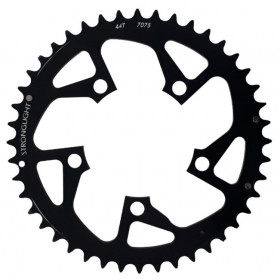 CustomizeNew product -25%Stronglight chainring 94 mm 8 9 speed
CustomizeNew product -25%Stronglight chainring 94 mm 8 9 speed- €20.03
- €26.70
-
 New product30 teeth chainring Shimano 94 mm 11 speed
New product30 teeth chainring Shimano 94 mm 11 speed- €24.90
-
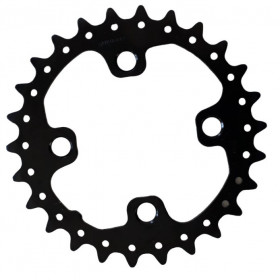 New productShimano chainring 26 teeth 64 mm 9 speed black
New productShimano chainring 26 teeth 64 mm 9 speed black- €15.99
-
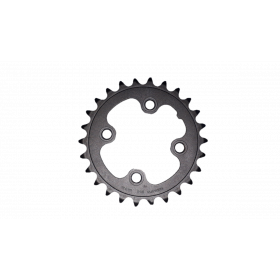 New productChainring Shimano 26 teeth 64 mm
New productChainring Shimano 26 teeth 64 mm- €7.99
-
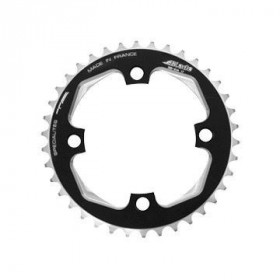 New productTA Blade chainring single 41 teeth 104 mm
New productTA Blade chainring single 41 teeth 104 mm- €29.99
-
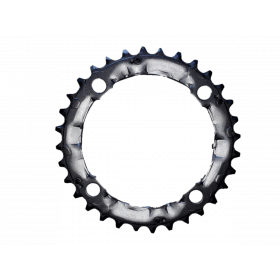 UsedShimano steel chainring 32 teeth 9 speed 104 mm
UsedShimano steel chainring 32 teeth 9 speed 104 mm- €7.99
-
 New productChainring 32 teeth 9 speed 104 mm
New productChainring 32 teeth 9 speed 104 mm- €18.99
-
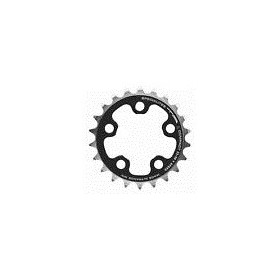 New productTA Chinook chainring 22 teeth 8/9 speed 58 mm
New productTA Chinook chainring 22 teeth 8/9 speed 58 mm- €19.99
-
 New productChainring 36 teeth 9 speed 104 mm
New productChainring 36 teeth 9 speed 104 mm- €9.90
-
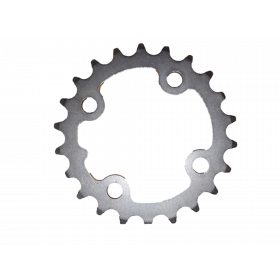 New productChainring 22 teeth 9 speed 64 mm
New productChainring 22 teeth 9 speed 64 mm- €4.55
-
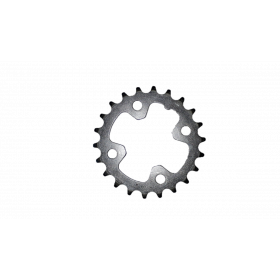 UsedShimano 22 teeth chainring 9 speed 64 mm
UsedShimano 22 teeth chainring 9 speed 64 mm- €4.99
-
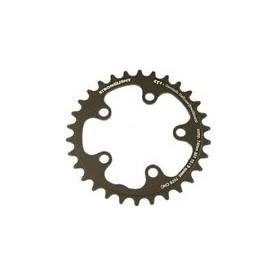 New productStronglight 30 teeth chainring 74 mm 9/10 speed
New productStronglight 30 teeth chainring 74 mm 9/10 speed- €14.90
-
 More detailsNew product -38.8% Out-of-StockShimano MT500 chainring 40 teeth 96 mm 10 speed
More detailsNew product -38.8% Out-of-StockShimano MT500 chainring 40 teeth 96 mm 10 speed- €20.19
- €32.99
-
 More detailsUsed Out-of-StockPraxis works 32 teeth direct mount chainring
More detailsUsed Out-of-StockPraxis works 32 teeth direct mount chainring- €29.99
-
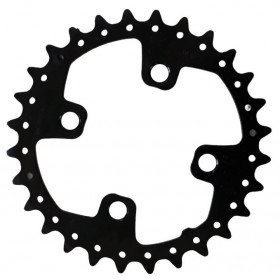 More detailsNew product Out-of-StockShimano chainring 28 teeth 64 mm 9 speed black
More detailsNew product Out-of-StockShimano chainring 28 teeth 64 mm 9 speed black- €15.99
Showing 1-15 of 15 item(s)
MTB Chainrings: optimize your drivetrain for the trails
Choosing the right MTB chainrings is essential to ensure a transmission and MTB crankset perfectly suited to your needs on the most demanding terrains. Whether you're a fan of technical descents, a tireless climber, or an endurance rider, a Shimano MTB crankset combined with a high-quality MTB bottom bracket guarantees maximum pedaling efficiency. Riders who prefer a triple MTB crankset will appreciate its versatility, ideal for adapting to changing gradients and long mountain rides. In this article, discover the best brands, key features, and important details to consider when choosing the perfect chainring.
The roles of a mountain bike platform
The MTB chainring is an integral part of the drivetrain and determines how easily you can pedal depending on the terrain.
Adaptation to the terrain:
Large deck for rolling terrain and fast descents.
Small plateau for steep climbs and technical passages.
Optimization of cadence:
Allows you to maintain a fluid cadence according to the profile of the course.Sustainability :
Designed to resist wear due to extreme conditions (mud, stones, shocks).Leading brands of MTB chainrings
Shimano
Flagship models: Deore, XT, XTR.Features :
Aluminum and steel trays for increased robustness.
Dynamic Chain Engagement technology for improved chain retention.
Available in single and double chainring versions.
Advantages: Reliability, versatility and wide compatibility.
SRAM
Flagship models: Eagle X-Sync, GX, XX1.Features :
Narrow-wide design for excellent chain hold.
Ideal for 1x12 speed drivetrains.
Lightness thanks to the use of aluminum and carbon.
Advantages: Smooth transmission and high performance on technical terrain.
Race Face
Flagship models: Cinch, Narrow Wide.Features :
Wide choice of sizes to perfectly fit your transmission.
Compatible with single chainring systems.
Neat aesthetics with several color options.
Advantages: Durability, lightness, and excellent value for money.
AbsoluteBLACK
Key models: Oval Chainrings.Features :
Oval chainrings for better power distribution.
CNC machined aluminum for perfect precision.
Coatings resistant to wear and corrosion.
Advantages: Optimization of effort, unique style, and technical innovation.
Hope
Key models: Retainer Ring, Spiderless.Features :
7075-T6 aluminum for superior strength.
Narrow-wide design to limit derailments.
Compatible with direct mount systems.
Advantages: Made in Europe, premium quality and unique aesthetics.
Technical characteristics of a MTB chainring
Chainring size:
Expressed in number of teeth (28T, 30T, 32T, etc.).Smaller size for climbs, larger for rolling terrain.
Materials:
Aluminum: Light and durable, ideal for regular exercisers.Steel: Heavier but extremely durable.
Carbon: Ultra-light, reserved for high-end models.
Type of attachment:
Standard BCD (Bolt Circle Diameter): Compatible with most cranks.Direct Mount: Simplified mounting for better rigidity and reduced weight.
Tray shape:
Round: Traditional, suitable for the majority of cyclists.Oval: Reduces dead spots in pedaling and improves efficiency.
Anti-derailment technologies:
Narrow-wide design to keep the chain in place even on uneven terrain.How to choose the right MTB chainring?
Analyze your practice area:
For mountainous terrain: choose a chainring with fewer teeth (28T to 32T).For flat or hilly terrain: opt for a larger deck (34T and above).
Compatibility with your transmission:
Check compatibility with derailleur, chain and cranks.Weight and materials:
If you are looking to lighten your mountain bike, opt for aluminum or carbon chainrings.
Budget :
Entry-level steel models offer good durability at a lower cost.The high-end carbon models are ideal for competitions.
Conclusion
The MTB chainring is a key element for personalizing your transmission and adapting your bike to your riding style. With renowned brands like Shimano, SRAM and Race Face, you can be sure to find a high-performance, durable chainring suited to your needs. Take the time to compare the options based on your terrain, your equipment and your objectives to fully enjoy your off-road outings.
With the right chainring, every pedal stroke becomes more efficient, allowing you to meet all the challenges that nature has in store for you !
